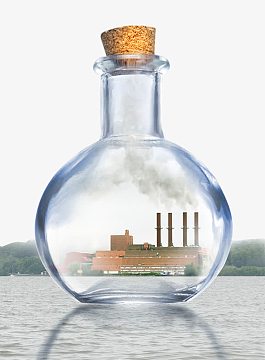Introduction
Le traitement des gaz résiduaires est une technologie de protection de l'environnement largement utilisée. Il est utilisé pour traiter les gaz résiduaires générés lors de la production industrielle et pour rendre l'air pollué conforme aux normes d'émission. L'élimination des poussières est une partie importante du traitement des gaz résiduaires. Son équipement principal est le cyclone dépoussiéreurEn analysant la conception du dépoussiéreur cyclonique, nous pouvons obtenir une formule adaptée à différentes conditions de travail, et elle sera utile pour le fonctionnement pratique du projet. Facteurs de conception du dépoussiéreur à cyclone

① Vitesse du gaz
Le mouvement du gaz dans le système de poussière est principalement réalisé par vitesse de l'écoulement de l'air. La vitesse du gaz augmente progressivement le long de la direction tangentielle du cylindre et atteint la valeur maximale lorsque le flux d'air atteint le sommet du cône. Pour les particules de taille supérieure à 10 mm, la vitesse du gaz peut atteindre 35 m/s ; pour les particules de taille inférieure à 10 mm, la vitesse du gaz est d'environ 25 m/s. 25 m/s-35 m/s est la plage d'efficacité maximale adoptée par de nombreux concepteurs lors de la conception de dépoussiéreurs.
② Pression du vent
La pression totale du système de dépoussiérage est principalement composée de la pression statique de l'entrée d'air, de la pression dynamique de l'orifice d'échappement et de la résistance. La résistance est déterminée par la forme et la rugosité du cylindre. À une certaine température, la pression absolue P du gaz est inversement proportionnelle au débit volumique q, c'est-à-dire P1/q1=k1, ici k1 est le coefficient proportionnel. Étant donné que la pression statique de l'entrée d'air peut surmonter une partie de la résistance, la pression totale du dépoussiéreur centrifuge est inférieure à celle du type à flux axial.
③ Résistance à l'usure
La résistance à l'usure du dépoussiéreur cyclonique affecte directement la durée de vie de l'équipement. En règle générale, plus les particules sont grosses, plus la densité est élevée et plus la surface du matériau est collante, plus la résistance à l'usure est élevée. Par conséquent, lors de la conception d'un dépoussiéreur cyclonique, il est nécessaire de prendre en compte les propriétés physiques de la poussière et les propriétés du gaz chargé de poussière.
④ Taille des particules
La taille des particules est l'un des paramètres caractéristiques de base des particules. Prenons l'exemple des particules solides dans l'air. La taille des particules fait référence au rapport entre le volume des particules solides dans une certaine plage de tailles de particules et le volume total des particules de cette taille de particules. La taille des particules solides affecte non seulement la surface spécifique de l'adsorbant, mais également le processus d'adsorption et de catalyse. Par conséquent, la distribution granulométrique de la poussière doit être prise en compte lors de la conception d'un dépoussiéreur à cyclone.
Résumé de la formule de conception d'un dépoussiéreur à cyclone
1. Débit de filtration : G = 200 ~ 800L/min
2. Débit de gaz : Q1 = (38 – P1 / K1) × V1
3. Charge de gaz : P2 = (200-600 Pa)
4. Efficacité de séparation : e = 95% ~ 99%
5. Efficacité de collecte des poussières : φ = 100% ~ 98%
6. Chute de pression : △p = 0,396 KPa ~ 0,684 KPa
7. Perte de pression admissible : △p<0,296 KPa
Dans la pratique, le dépoussiéreur à cyclone est généralement combiné avec moulin ou classificateur pour gérer et collecter efficacement la poussière générée pendant affûtage ou classement. Qingdao Epic Powder Machinery Co., Ltd. est un fabricant professionnel d'équipements de traitement de poudre. Qingdao Epic possède une riche expérience dans la production de divers types de pulvérisateurs, classificateurs et dépoussiéreursLes produits sont populaires auprès des clients nationaux et étrangers.
Si vous avez des besoins ou des questions connexes, veuillez contacter personnel de Qingdao Epic, ils sont toujours à votre service.

